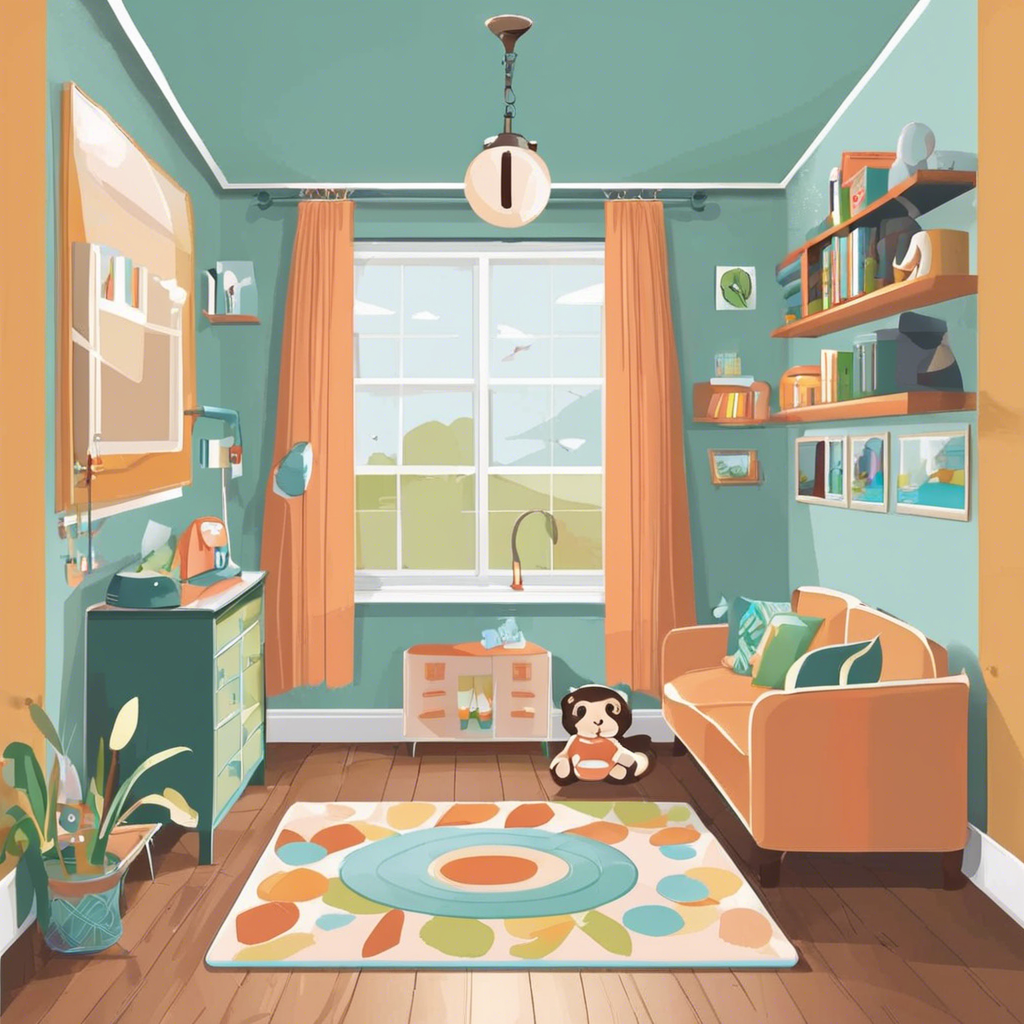Welcoming a baby into your home is a joyous occasion, but it also comes with the responsibility of creating a safe environment. Babies are naturally curious, and as they begin to crawl, pull up, and explore, the risk of accidents increases. Babyproofing your home is essential to prevent injuries and provide peace of mind. A room-by-room approach ensures that every space is assessed for potential hazards and modified accordingly.
The nursery is the first place to start. While it is designed to be a cozy and nurturing environment, hidden dangers can lurk. The crib should have a firm mattress that fits snugly, with no gaps where a baby could get trapped. Avoid placing pillows, blankets, or stuffed animals inside, as they pose suffocation risks. Secure heavy furniture like dressers and bookshelves to the wall to prevent tipping. Window blinds with long cords should be replaced with cordless options or have safety cord wraps installed. Outlet covers should be used to prevent electrical accidents, and a baby monitor should be positioned out of reach but within a clear view of the crib.
In the living room, babies are drawn to furniture, decorations, and electronic devices. Coffee tables with sharp edges should have corner guards to protect against head injuries. Secure televisions to the wall or a sturdy stand to prevent them from toppling. Electrical cords should be tucked away or secured with cord protectors to reduce the risk of strangulation. If your home has a fireplace, install a heat-resistant gate to block access. Houseplants should be placed out of reach, as some are toxic when ingested. Avoid small decorative objects that could be choking hazards.
The kitchen is full of potential dangers, from hot surfaces to sharp utensils. Cabinet locks should be installed to keep babies from accessing cleaning supplies, sharp objects, and heavy cookware. Stove knob covers prevent accidental burns, and an oven lock adds an extra layer of protection. Small appliances like blenders and toasters should be unplugged and stored when not in use. High chairs should always have a safety harness, and the area beneath them should be kept clear to prevent tipping. Avoid placing tablecloths within reach, as babies can pull on them and cause objects to fall.
The bathroom requires extra precautions due to the risk of drowning and poisoning. Toilets should have safety locks, and non-slip mats should be used inside and outside the bathtub to prevent falls. Always keep the toilet lid closed when not in use. Medications and toiletries should be stored in locked cabinets or out of reach. Water temperature should be set to a safe level (around 120°F or 49°C) to prevent scalding. Never leave a baby unattended in the bathtub, even for a second. A soft spout cover on the faucet can protect against head injuries during bath time.
In the bedroom, furniture should be securely anchored to prevent tipping. Heavy mirrors and wall decorations should be securely mounted to avoid falling. Avoid using heavy bedding and pillows for infants, as they pose suffocation risks. If there is a nightstand or dresser, ensure that items such as lamps and alarm clocks are not within the baby’s reach. If your child sleeps in a bassinet, ensure that it meets current safety standards and is used according to the manufacturer’s guidelines.
The hallways and staircases are often overlooked, but they require careful attention. Safety gates should be installed at the top and bottom of staircases to prevent falls. These gates should be hardware-mounted for a secure fit. Rugs should have non-slip pads underneath to prevent tripping. If your home has glass doors, applying shatterproof film can prevent injuries in case of an accident. Keep small items off the floor, as babies can pick them up and put them in their mouths.
The laundry room contains cleaning products and heavy appliances that pose risks. Always keep detergent pods and other toxic chemicals in locked cabinets or out of reach. Ensure that the washer and dryer doors remain closed when not in use. If possible, use childproof knobs on these appliances. Laundry baskets should be placed in an area where they won’t tip over if a child tries to pull themselves up. Small items like buttons, loose coins, and sewing needles should be kept out of reach, as they can be choking hazards.
The garage or storage areas contain a variety of dangers, from power tools to hazardous chemicals. Store sharp tools, paint, and automotive fluids on high shelves or in locked cabinets. If you keep a car in the garage, ensure that it is always locked when not in use. Carbon monoxide detectors should be installed near sleeping areas to prevent poisoning. Avoid storing ladders or large objects where they can be pulled down. Keep trash cans secured with lids, and never allow a child to play unsupervised in the garage.
Outdoor spaces, such as balconies, patios, and gardens, also require babyproofing. If you have a balcony, ensure that railings are secure and that there are no gaps where a baby could slip through. Outdoor furniture should be stable, and any sharp edges should be covered. If you have a pool, a four-sided fence with a self-latching gate is a must. Keep all gardening tools and chemicals locked away. Watch for choking hazards like small stones, acorns, or pieces of mulch that babies might try to put in their mouths.
Finally, general babyproofing tips should be applied throughout the home. Install smoke and carbon monoxide detectors in key areas and test them regularly. Keep emergency numbers, including poison control, easily accessible. Use door stoppers or pinch guards to prevent little fingers from getting caught in doors. Regularly scan your home for new hazards as your baby grows and develops new abilities. Babyproofing is not a one-time task but an ongoing process to keep your child safe in an ever-changing environment.

